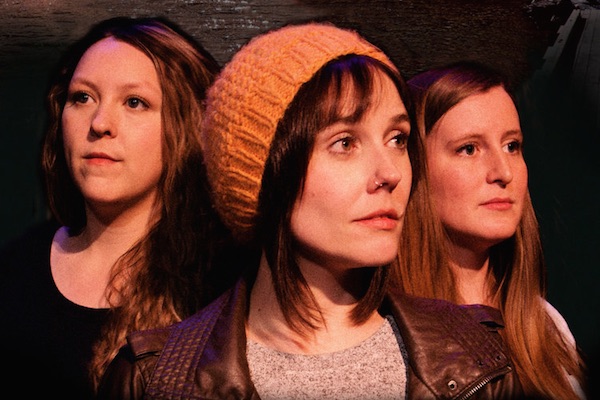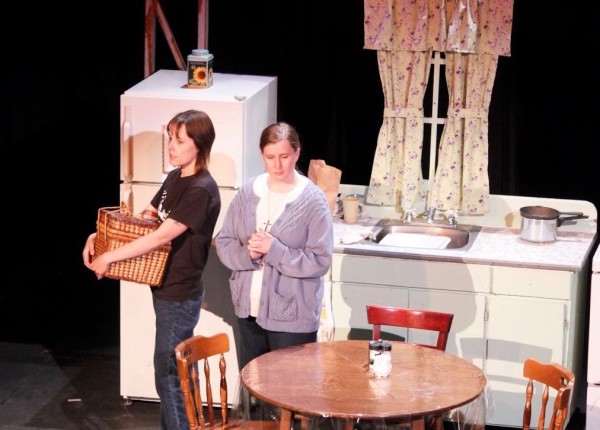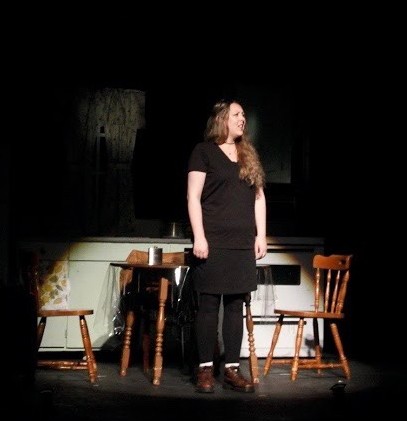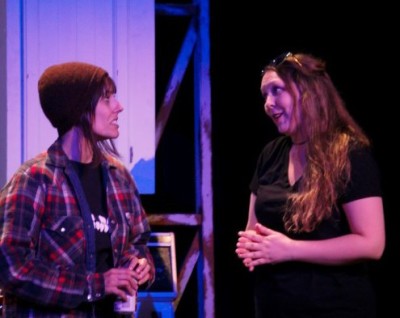REVIEW BY JENN TUBRETT

When I agreed to review this play, I promised myself that I would be unbiased, that I would be critical, and that I would provide a well-rounded review with both the ups and downs that most productions experience.
The problem? I cannot fault this production.
It may have been opening night magic (although, given the talent of the cast and the clear eye of the direction, I doubt it), but from the moment Lindsay Thompson takes the stage to give her opening monologue (the famous “In the dream I’m drowning…”), the audience is hooked. The play clips along, tension building and breaking, sometimes with a sarcastic joke and sometimes with a powerful outburst, so much that we could have been standing on the bridge with them in the concluding scene.

The music (sound design by Clayton McNeil with Kevin Munroe as the sound technician) is, for the most part, Celtic. Some tunes recognizable by melody, (such as a haunting and lovely rendition of Black Bird) even though the words are Gaelic. It takes us seamlessly from scene to scene, never giving the audience emotional respite from the powerful drama that is unfolding before us. The lighting (designed by Ken Heaton) gives us a clear indication of the time of day, tense spotlights, and outdoor brilliance—when the stark and bright “sunlight” hits the three actors in the final scene, the audience is lifted into a day that is not only physically bright, but promises a brighter future as well.
Stage Manager Ida Marie Steeves operated the light booth, but a stage manager’s work is so much more than that and, when done right, goes completely unnoticed by an audience. Did any one at the show last night notice the actors struggling with misplaced or unrealistic props? Did you notice them senselessly shift set pieces awkwardly to place them where they should have been to begin with? Cool, neither did I. (Good work Ida!)
The costume design, by Diana MacKinnon-Furlong, was spot on. Big-city Agnes makes every outfit fashionable with a killer leather jacket. Conservative Theresa could have easily been a woman wearing a big cross, but paired with the cozy sweaters and high cut shirts, she is clearly a nun. Casual Louise with her plaid and denim, still manages to look young and fresh despite being layered in loose clothing.
And, before I move on from the crew, I must give a Tip Of The Hat (pun intended) to Bob Lewandowski for prompting. Prompting is a repetitive, somewhat dull, and daunting task. Knowing Lewandowski, he approached the task with enthusiasm and high spirits. Considering the sharp and unhesitant dialogue, these women know their lines inside out.

These three talented woman play off each other in a way that makes them undoubtedly believable as sisters, despite their many, many, many, differences. More than giving life to these three complex and intriguing characters, the cast gives life to an entire community around them. The central, but never seen, mother, the clueless girl at the flower shop, an ex-boyfriend, a possible lover, an absent father, and many more; a world surrounds them and each piece forms one great picture, a picture of home. To top the cake, (it’s not the icing, but definitely the sprinkles), the hilarious and melodramatic soap opera voiceover work by Todd Hiscock and Kerrianne MacKenzie creates something that is realistic (by soap opera terms) and a complete farce. This sound bites give the audience the same small escape that the fictional television show gives to the women in the play.

As for the bridge itself, it is introduced as a memory at different times by each of the sisters, and each sister remembers it a little differently. As such, the bridge serves as a metaphor for how siblings raised in the same place by the same parents, still experience life very differently. There are so many parts to Marion Bridge that you will relate to as a Cape Bretoner, family members, or a person struggling to find their footing as life fails to turn out the way they expected it to. The show is funny, tragic, suspenseful, and comforting all in one compact, under-two-hour, display.
If you’ve come this far in my review and have retained nothing, please remember this one piece of advice: GO SEE THIS PLAY. It runs every Thursday night until August 10th as a part of the Highland Arts Theatre summer of plays. Marion Bridge also runs Monday nights at Strathspey Performing Arts Centre in Mabou until August 14.

